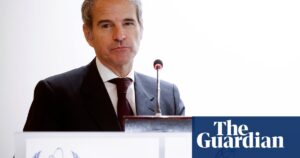
In a pivotal moment for international climate policy, world leaders gathered this week at the United Nations Climate Summit in New York City. The summit, which commenced on Monday, aims to tackle the escalating climate crisis through collaborative global efforts. This year’s theme, “Uniting for a Sustainable Future,” underscores the urgency of the situation as nations face increasing environmental challenges.
The summit comes as extreme weather events have intensified worldwide, with devastating hurricanes, wildfires, and floods becoming more frequent. According to the latest report from the Intergovernmental Panel on Climate Change (IPCC), the global temperature is on track to rise by 1.5 degrees Celsius above pre-industrial levels by 2030, a critical threshold that could lead to irreversible environmental damage.
Key Agreements and Initiatives
During the opening sessions, leaders from over 190 countries pledged to enhance their national commitments to reduce greenhouse gas emissions. Notably, the United States and China, the world’s largest carbon emitters, announced a joint initiative to increase investments in renewable energy and improve energy efficiency.
European Union representatives highlighted their ambitious Green Deal, which aims to make Europe the first climate-neutral continent by 2050. Meanwhile, developing nations called for increased financial support to adapt to climate impacts, emphasizing the principle of common but differentiated responsibilities.
Expert Opinions and Analysis
Climate experts have lauded the summit as a crucial step forward but caution that implementation will be key. Dr. Maria Rodriguez, a climate scientist at the University of Oxford, stated,
“While these commitments are promising, they must be backed by concrete actions and policies. The next decade will be critical in determining the future of our planet.”
Environmental activists are also closely monitoring the summit, urging leaders to prioritize climate justice and ensure that vulnerable communities are not left behind. Greta Thunberg, a prominent climate activist, addressed the assembly, calling for immediate and bold action.
“We cannot afford to wait any longer. The time for half-measures is over,” she declared.
Historical Context and Comparisons
The current summit builds on previous international efforts, such as the Paris Agreement of 2015, where countries committed to limiting global warming to well below 2 degrees Celsius. However, progress has been uneven, with some countries failing to meet their targets. The Kyoto Protocol, established in 1997, also laid the groundwork for international climate cooperation, though it faced challenges in enforcement and participation.
Historically, climate summits have served as platforms for negotiation and consensus-building, but the gap between pledges and actions remains a persistent issue. The current summit seeks to bridge this gap by fostering transparency and accountability among nations.
Implications and Future Prospects
The outcomes of this summit could have far-reaching implications for global climate policy. Successful implementation of the agreements could accelerate the transition to a low-carbon economy, stimulate green innovation, and create sustainable jobs. Conversely, failure to act decisively could exacerbate climate impacts, leading to severe economic and social consequences.
As the summit progresses, attention will turn to the upcoming Conference of the Parties (COP) in Glasgow, where countries are expected to present updated climate action plans. The decisions made in New York will likely influence the negotiations and set the tone for future climate diplomacy.
In conclusion, the UN Climate Summit represents a critical juncture in the global fight against climate change. With the world watching, leaders have an opportunity to demonstrate their commitment to a sustainable future. The coming months will reveal whether these pledges translate into meaningful progress or remain as mere declarations.







